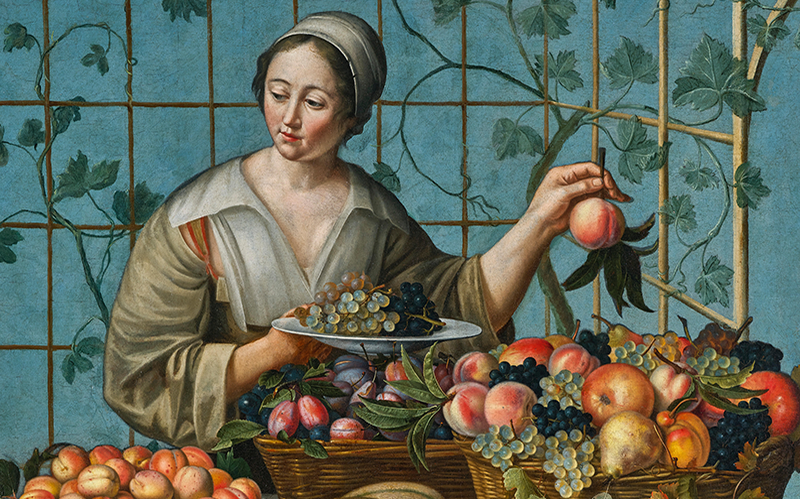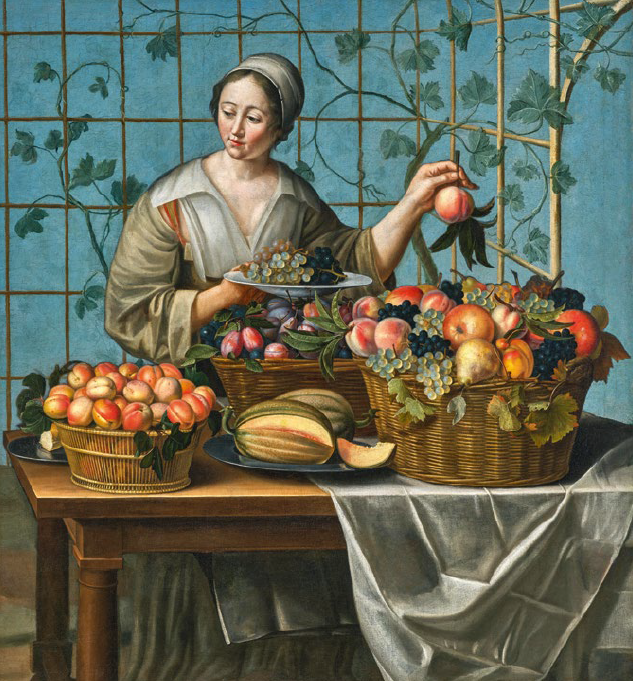
A Feast for the Eyes
Dorotheum is delighted to present an important work by one of the rare pre-eminent female artists in 17th century France, Louyse Moillon. The Fruit Seller is offered for sale in the Old Master Paintings auction on 24 April 2024.
The Fruit Seller is a magnificent example of the highly acclaimed, subtle, painterly style for which Moillon was famous even in her own lifetime, a long life played out amidst the political and religious turmoil of France in the 1600s. Admirers of her work included King Louis XIII of France and King Charles I of England, both of whom purchased her paintings, and still today, Louyse Moillon is one of the most highly regarded French still-life painters. As is often the case with the female painters of her time, Moillon came from a family of painters, and would become their most celebrated member.
The Moillons were devout Huguenots, and Louyse grew up in the Saint-Germain-des-Prés district of Paris, which was an enclave of Protestant refugees who came from the southern Netherlands. Among them were many artists who brought the still-life painting tradition to France. Still-life painting was not considered worthy of prestige by the 17th century Académie Royale de Peinture et de Sculpture in Paris. Nevertheless, trade in the genre flourished on the Dutch market and the wealthy Parisian bourgeoisie showed an increasing interest in the genre. Louyse’s father, Nicolas Moillon, was a landscape and portrait painter as well as being an art dealer, while his brother Isaac, who was also very well known, became a history painter and, like his father, a member of the Académie Royale. Louyse was initially taught by her father, but after his death, her stepfather, the wealthy still-life painter Francois Garnier, took over her further training and encouraged her interest in this genre.
At the young age of just 20 years old, Louyse was already enjoying success with the sale of her works. Her restrained elegant style, which is characterised by great attention to detail and contrasts of light and dark, reflect the Dutch and French influence she grew up with. Bowls and baskets of lavishly arranged fruit and vegetables at the peak of ripeness, and vases over-flowing with sumptuous flowers, characterise Moillon’s pictures. She was one of the first artists to include figures in her still-life paintings, as is seen here in her enchanting and meticulously realistic painting The Fruit Seller. The painting can be dated to her most productive period between 1630 and 1640. Her artistic production declined after 1640, following her marriage to the wealthy Burgundian Huguenot timber merchant, Girardot de Chancourt.
The royal Edict of Fontainebleau of 1685, which severely restricted the rights of French Calvinists, hit the Girardot family hard. Threats and abuse were directed against the family members: the artist’s husband, remaining loyal to Calvinism, was imprisoned. Two of their children and possibly Louyse herself, fled to England, other family members were forced to con- vert to Catholicism. Louyse Moillon died in Paris in 1696 at the advanced age of 86.
Only around 40 paintings by Louyse Moillon have survived; The Fruit Seller occupies an important position in the artist’s œuvre. Comparable works by the painter, can be found in the Louvre, Paris and in the Musée des Beaux Arts, Strasbourg.

AUCTION
Old Master Paintings, 24 April 2024, 18:00
Palais Dorotheum, Dorotheergasse 17, 1010 Vienna
oldmasters@dorotheum.com
Tel. +43-1-515 60-403











